One of the easiest ways to brighten up a room is to add some plants to it. However, if you’re too busy or simply haven’t been blessed with a green thumb, you may find it hard to keep indoor plants alive. The obvious solution is to get succulents because they’re almost impossible to kill. But what if you really want your room to look like a lush indoor jungle rather than a tired semi-desert? The good news is that there are other types of plants that require little maintenance. Here are 20 easy to care for indoor plants that go beyond succulents.
Published March 28, 2019, Updated February 3, 2021
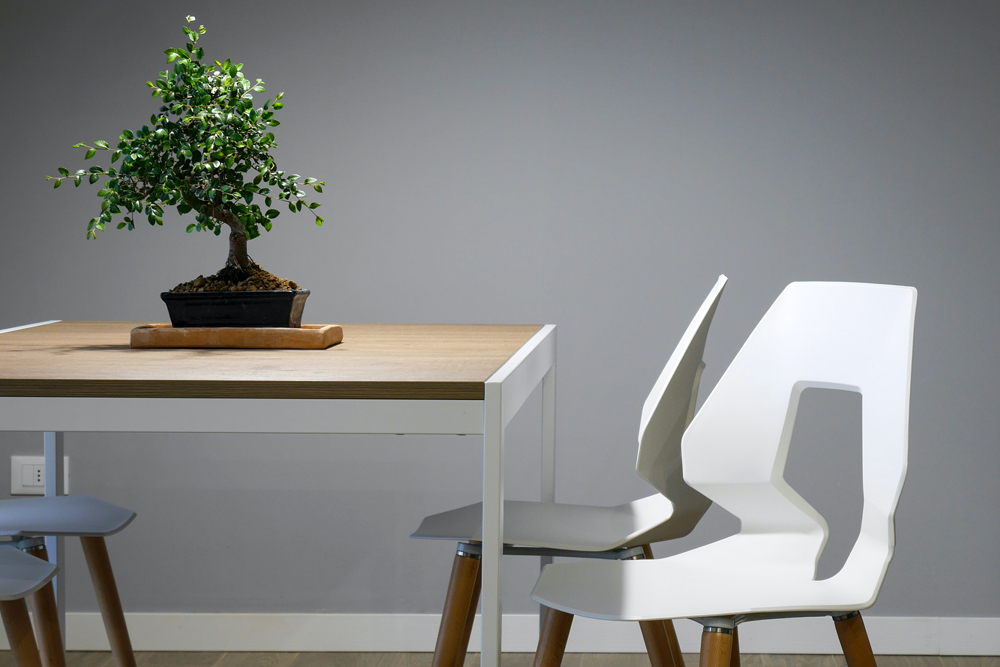
Bonsai Trees
Growing and nurturing bonsai trees has been long-heralded as a great stress-reliever and its tradition of snipping and pruning is firmly rooted in history. Tending to these miniature replicas of full-grown trees found in nature has been a time-honoured Chinese tradition dating back more than 1,000 years. Not to mention, their unique growth patterns make for a show-stopping addition to your home. And don’t fret, even with all that history, bonsai trees for beginners is possible too.
Related: 15 Plants That’ll Help With Stress, Anxiety and Depression

Lavender (Lavandula spp.)
Lavender’s relaxing properties help promote better sleep, so it’s one of the best plants for your bedroom. Place it in front of a sunny window with good ventilation and water it only when the soil feels slightly dry. Planting it in a terra cotta pot will help prevent root rot.
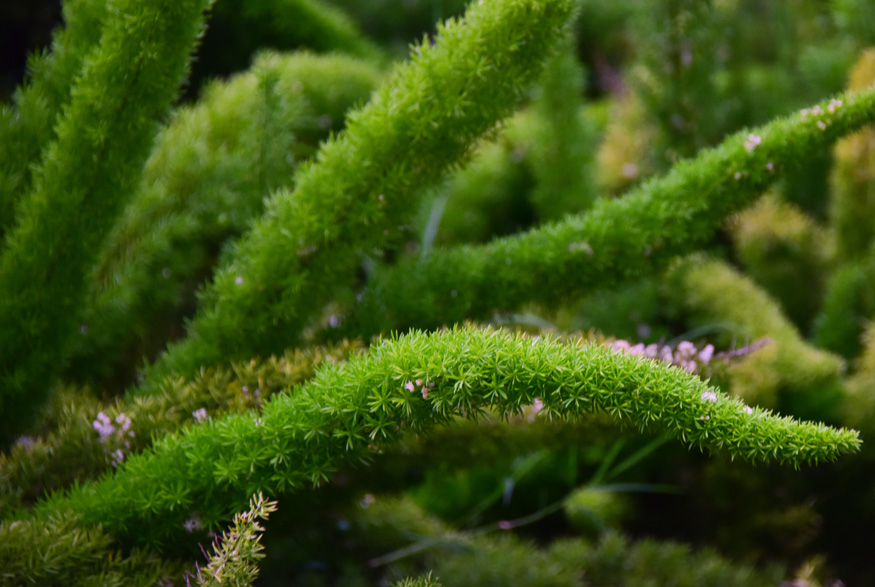
Asparagus Fern (Asparagus setaceus)
This hardy asparagus fern isn’t technically a fern, which is why it’s so easy to care for. It prefers dappled light, warmer temperatures and humidity, so it’s perfect for the bathroom. Daily misting will help it thrive.
Related: 15 House Plants That Help Reduce Humidity in the Bathroom

Dracaena (Dracaena spp.)
Dracaena plants prefer warmer temperatures and bright, filtered light. They thrive best in moist soil, but take care that the soil doesn’t become soggy through overwatering. When the plant grows too high, simply cut off the top and new shoots will appear within weeks.
Related: These Are the 20 Most High-Maintenance Plants – Can You Handle Them?
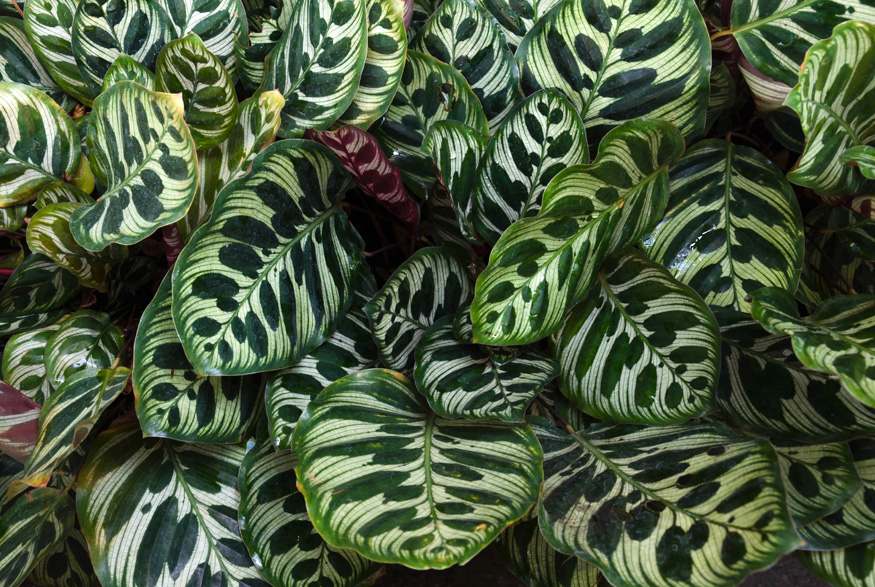
Peacock Plant (Calathea makoyana)
The peacock plant’s unusual leaf markings will make it a good talking point. This plant loves high humidity, so it’s a good addition to the kitchen or bathroom. To provide enough humidity, simply place bowls of water around it and avoid lots of bright light.
Related: 15 Plant-Filled Living Rooms for Serious Decor Inspiration
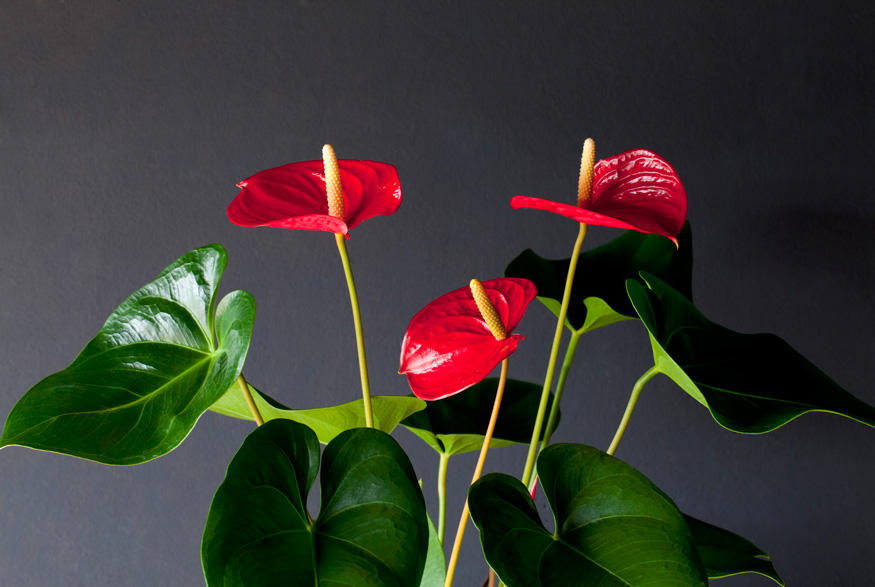
Anthurium (Anthurium andraeanum)
Anthurium produces stunning flowers: usually bright red, but you can also find hybrids in other colours. Place it in medium to bright light where it doesn’t get direct sun. It does best in evenly moist soil but during fall and winter months the soil should be barely moist, so you shouldn’t water it too often. Since the leaves are toxic, it’s best to place your anthurium plant out of reach of kids and pets.

Parlour Palm (Chamaedorea elegans)
The low-maintenance parlour palm is one of the plants that are safe for kids and pets. It does well in a north-facing spot since it prefers bright, filtered sunlight. It’s sensitive to overwatering, so water it infrequently.
Related: Signs You’re Overwatering Your Plants (and 5 Signs You Aren’t Watering Them Enough!)

Peace Lily (Spathiphyllum wallisii)
The peace lily likes warm temperatures and moist soil. It can grow in both low and bright light conditions and tolerates low humidity. It usually flowers in summer and is one of the plants that will improve the air quality in your home.
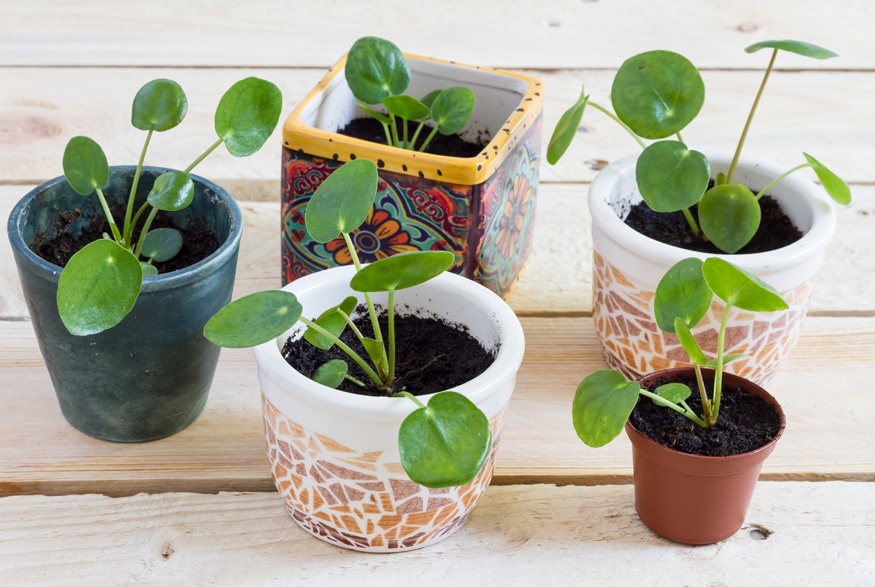
Chinese Money Plant (Pilea peperomioides)
The Chinese money plant grows best in sandy soils and in spots with bright light, but out of direct sunlight. You only need to water it once a week or so. These small plants may be difficult to find in Canadian nurseries but grow easily from cuttings, so they make a good friendship plant.
Related: The 15 Luckiest Plants for Your Home
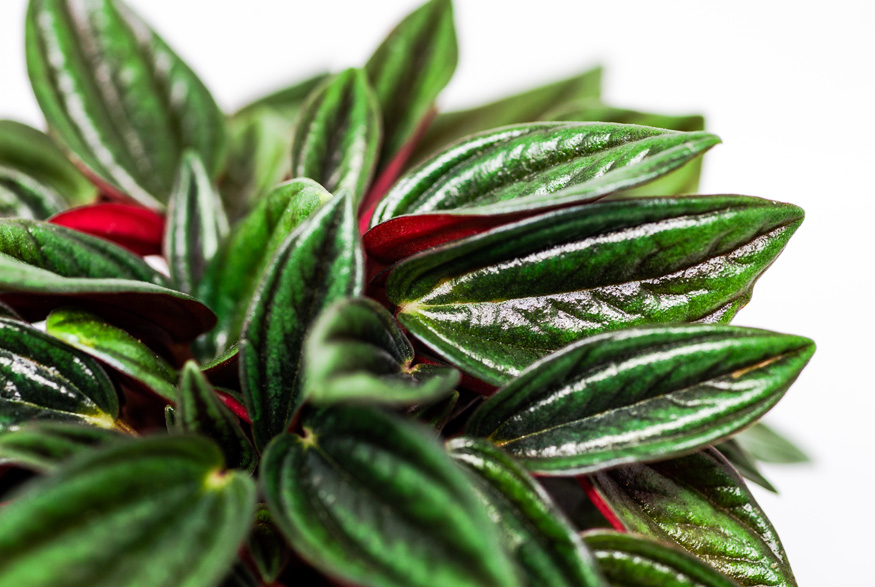
Radiator Plant (Peperomia spp.)
The radiator plant or Peperomia is a great option for your home office. It’s compact so you can put it on your desk or on a shelf. It grows well even under fluorescent light. It’s fine if you forget to water this plant, since you actually need to let the soil dry out between waterings.

Cast Iron Plant (Aspidistra elatior)
The cast iron plant is tough as, well, cast iron. It tolerates dust, heat, cold, dry soil, wet soil, low light and general neglect. However, it prefers cooler temperatures and bright, yet indirect, light.

Spider Plant (Chlorophytum comosum)
The spider plant is one of the easiest houseplants to grow. It’s highly adaptable to different conditions but does best in cooler temperatures and bright, indirect light. However, fluoridated water can cause its leaf tips to turn brown, so it’s better to water it using rainwater or distilled water.
Related: How to Propagate Your Plants – Our Resident Plant Mom Reveals Her Top Tips!
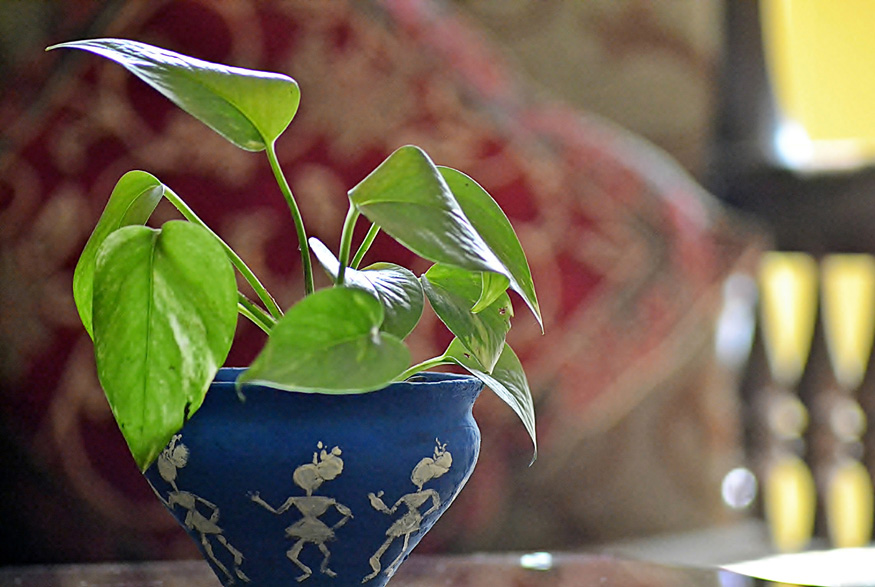
Pothos (Epipremnum Aureum)
Pothos adapts easily to different conditions and is one of the indoor plants that thrive in low light. Because it’s so easy to care for and so hard to kill, it’s a great option for beginners. Keep it out of reach of kids and pets, though, since it is toxic.

Dieffenbachia (Dieffenbachia spp.)
Also known as dumb cane, dieffenbachia plants are hardy and adaptable. They prefer well-drained soils and light watering, as well as filtered light. Keep in mind though that dieffenbachia plants are toxic.
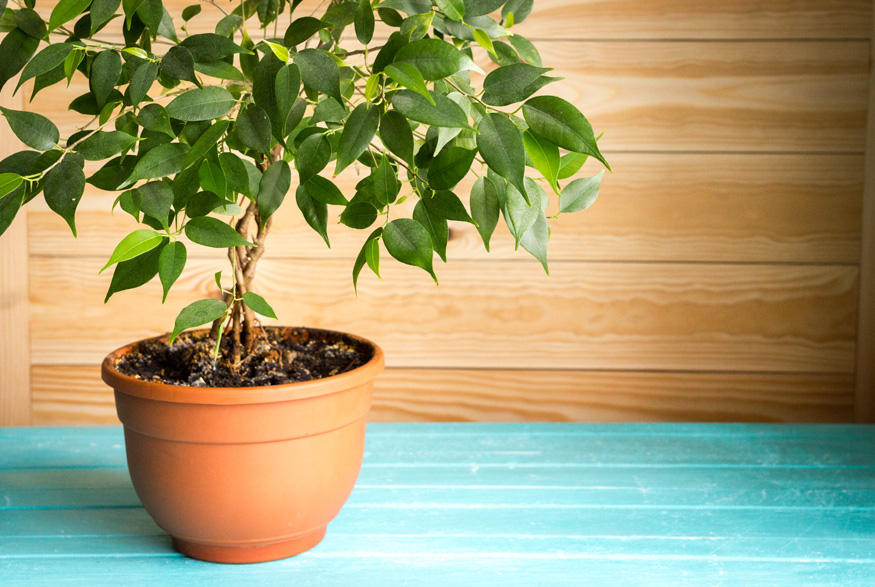
Ficus (Ficus spp.)
Depending on its size, you can keep a ficus on the floor or on a tabletop. There are many different species, and most prefer bright light in summer and more moderate light in winter. Allow the soil to become slightly dry between watering and rotate the plant regularly so that all sides get enough light.
Related: Weird Plant Tips for Your Home and Garden That Actually Work
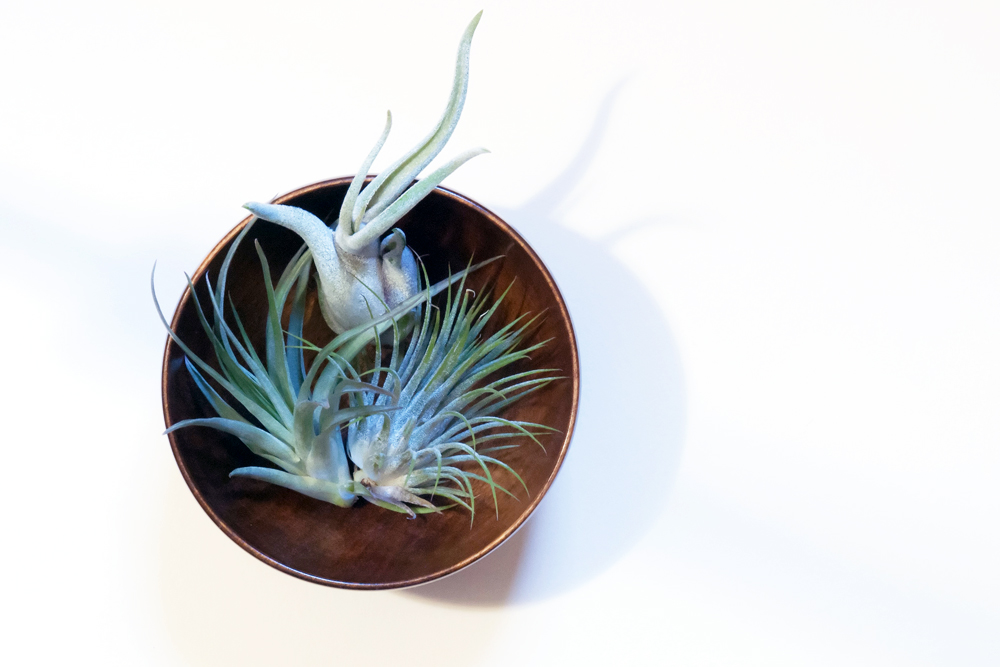
Air Plant (Tillandsia spp.)
Just about all rooms are made better with plants. With air plants, you don’t even need soil: you can simply keep them in a glass bowl or vase in bright, filtered light. To water them, let them soak in a bowl or sink full of water once a week, let the excess water run off and put them back in their container.
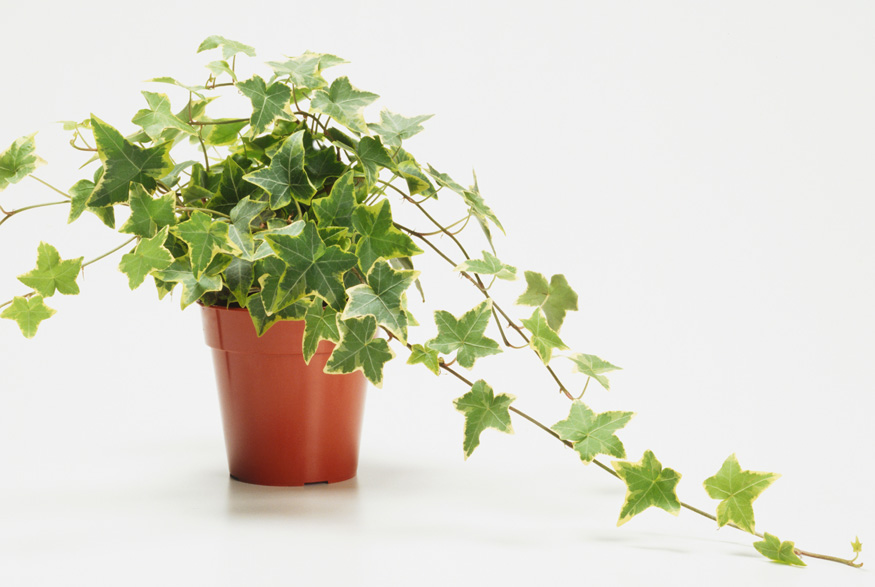
English Ivy (Hedera helix)
English ivy is a gorgeous plant to grow on a trellis or in a hanging basket. It prefers bright light and well-drained soil. You only need to water it when the soil feels dry. About once a month in spring, summer and fall, you can add a nitrogen-rich fertilizer.
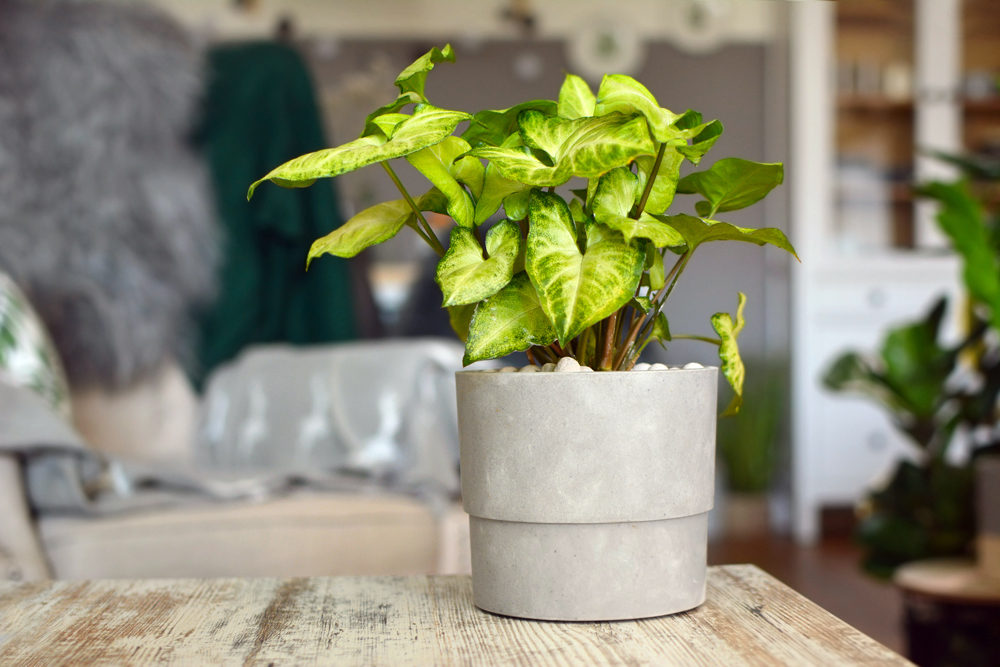
Arrowhead Vine (Syngonium podophyllum)
The arrowhead vine does just fine in artificial light. You can place small plants in baskets with other plants and train larger plants to a moss pole. Keep the soil evenly moist.
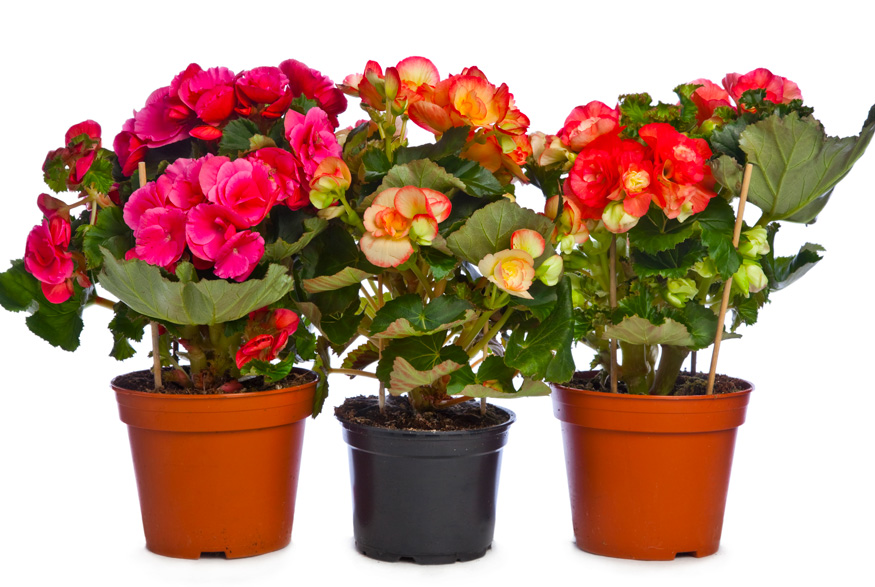
Begonia (Begonia spp.)
Begonia plants are one of the easiest ways to add colour to a room because of their showy flowers and the fact that they’re naturally pest resistant. Some hybrids will also flower in winter. They prefer lots of bright, indirect light and high humidity levels. Only water them when the leaves start drooping because they’re sensitive to overwatering.

Philodendron (Philodendron spp.)
Philodendron plants adapt to just about any indoor setting and can tolerate low light, so they’re great for shelves. In fact, placing them high up on a shelf is best since they’re toxic to children and pets. Water them when the soil gets slightly dry and keep the soil evenly moist.

ZZ Plant (Zamioculcas zamiifolia)
The ZZ plant is almost indestructible, tolerating low light, low humidity and drought. Be careful not to overwater your ZZ plant: its rhizome and spongy stems store enough water. Keep your plant in moderate to high light but far away from direct sunlight and drafts.
Related: Support Local: The Best Online Plant Stores in Canada
Home Network your inbox.
By clicking "SIGN UP” you agree to receive emails from Home Network and accept Corus' Terms of Use and Corus' Privacy Policy.




